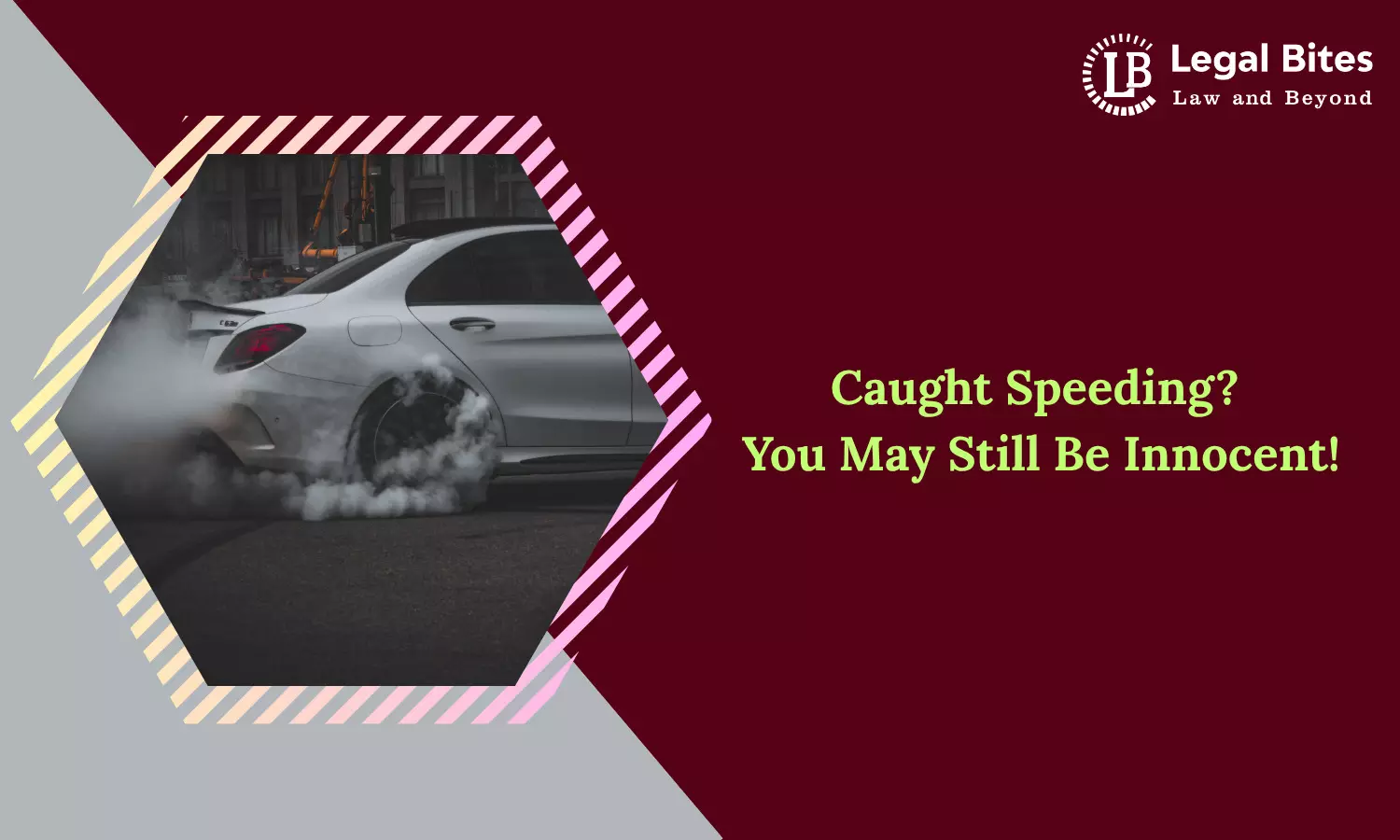Is Every High-Speed Driver Liable for Rashness?
Does speeding always mean guilt? Explore the legal test for rashness under Indian law, with insights from Justice Rajesh Rai’s 2025 judgment.

The sight of speeding vehicles on Indian roads often triggers concerns about safety and accountability. When an accident occurs, the common presumption is that high speed automatically translates into rash or negligent driving. But is that truly the case in the eyes of the law? Can a person be held criminally liable merely for driving fast, even if an accident occurs?
This article explores the nuanced relationship between high-speed driving, rashness, and negligence under Indian criminal law, particularly in light of recent judicial pronouncements, including the Karnataka High Court’s 2025 decision in Harish v. State of Karnataka (CRL.RP No. 1004 of 2021).
Legal Framework: Indian Penal Code or Bharatiya Nyaya Sanhita, 2023
Under the Indian Penal Code (IPC)/Bharatiya Nyaya Sanhita (BNS), the primary provisions dealing with road accidents involving rash or negligent driving are:
Section 279 IPC (Now Section 281 BNSS): Penalises rash driving or riding on a public way, punishable with imprisonment up to six months, or with fine up to ₹1,000, or both.
Section 304A IPC (Section 106 BNS): Penalises causing death by negligence, with imprisonment up to two years, or with fine, or both. (IPC)
Under the Bharatiya Nyaya Sanhita (BNS), causing death by negligence is punishable with imprisonment up to five years and a fine, harsher than the IPC, which allowed up to two years or fine or both.
Both sections require the prosecution to establish a clear link between the accused’s act and the negligent or rash conduct that led to the harm or death.
Case in Focus: Harish v. State of Karnataka (2025)
Background
In this case, the petitioner, Harish, was driving a Maruti Suzuki Celerio that collided with a parked two-wheeler on which the deceased was seated. The impact caused severe injuries, ultimately leading to the victim’s death. Harish was convicted by both the Trial Court and the First Appellate Court under Sections 279 and 304A IPC.
The key prosecution witness (PW-1) claimed to be an eyewitness but later admitted in cross-examination that he reached the hospital after being informed by the accused, who had already taken the injured victim there. This raised significant doubts about his presence at the scene of the accident.
High Speed ≠ Rashness: Judicial Reasoning
Justice Rajesh Rai of the Karnataka High Court acquitted Harish by holding that driving at high speed, in itself, is not conclusive evidence of rashness or negligence. The judgment reiterated a principle established by the Supreme Court in State of Karnataka v. Satish [(1998) 8 SCC 493], which held:
“Merely because the truck was being driven at a ‘high speed’ does not speak of either ‘negligence’ or ‘rashness’ by itself. High speed is a relative term... there must be evidence showing the manner of driving to infer criminal rashness.”
In Harish, the court emphasised the following gaps in the prosecution’s case:
- PW-1’s testimony was inconsistent and unreliable.
- The sketch map and accident scene did not show clear evidence of reckless driving.
- The postmortem revealed strong traces of alcohol in the deceased's stomach, raising doubts about contributory negligence.
- No concrete evidence was produced about the vehicle’s speed or the prevailing road conditions.
Understanding Rashness and Negligence in Legal Terms
Rashness
Rashness implies a reckless disregard for the consequences of an action, with a conscious awareness of the potential danger. It is not mere carelessness; it is a willful indifference to the risk posed to others.
Negligence
Negligence involves failing to exercise the care that a reasonable person would in similar circumstances. In legal parlance, this failure must be proven to have caused reasonably foreseeable harm.
The Karnataka High Court drew upon the Donoghue v. Stevenson [(1932) AC 562] test of foreseeability and proximity to evaluate whether the accused could have reasonably foreseen the fatal consequence of his act.
Importance of Evidence in Rash Driving Cases
In criminal cases involving road accidents, it is not enough to state that the vehicle was driven fast. Courts require:
- Specific evidence about the speed (e.g., from speedometers, CCTV footage, eyewitnesses).
- Contextual factors like road type, weather, visibility, and traffic flow.
- Expert reports, including mechanical inspections and postmortem analysis.
- Witness credibility, especially when based on sole eyewitness accounts.
The judgment in Harish underscores the need for independent and corroborative evidence to attribute criminal liability.
Contributory Negligence and Comparative Fault
A noteworthy aspect of the judgment was the consideration of the deceased’s alleged intoxication. The postmortem report noted pungent alcohol odour in the stomach contents, leading the court to consider contributory negligence. While contributory negligence doesn’t absolve the accused of civil liability, it can be a strong mitigating factor in criminal proceedings, especially under Sections 279 and 304A.
Role of Maxims: Res Ipsa Loquitur and Its Limits
In many accident cases, courts rely on the maxim res ipsa loquitur (“the thing speaks for itself”) to infer negligence from the circumstances. However, this doctrine is not applicable in criminal law unless supported by direct or circumstantial evidence that meets the high standard of proof beyond a reasonable doubt.
In Harish, the court found that neither the accident itself nor the evidence led to an automatic inference of rashness or negligence.
Key Highlights of the Judgment
In the words of Justice Rajesh Rai:
Effectively, at this juncture I find it imperative to touch upon the nuances of understanding the term ‘negligence’, negligence essentially is defined or rather understood in a rudimentary sense as a breach of duty. Meaning, an act of negligence must be coupled with willful omission of doing something which a prudent person would have done in similar circumstance.
This breach of duty should lead to some kind of damage. Further, while ascertaining the degree of negligence, it is significant to ruminate on the ‘Principle of Foreseeability and Proximity’ as laid down by Lord Atkin in the landmark case of Donoghue v Stevenson reported in 1932 A.C 562.
Additionally, let us take a moment to delve into comprehending and elucidate the conundrum that needs to be addressed: What amounts to rashness and negligence?
Rashness innately implies to recklessness coupled with a state of conscious breach of duty to care where there exists a necessity of care i.e., negligence. Rashness and negligence are multi-faceted concepts which cannot be comprehended and interpreted in isolation, it significantly depends on facts and circumstances of each case.
Broader Implications of the Judgment
The decision in Harish v. State of Karnataka serves as a judicial caution against:
- Presuming guilt based on the occurrence of an accident.
- Treating high speed as a standalone offence, without examining context and intent.
- Relying solely on questionable eyewitness testimony.
It promotes a principled approach to criminal liability, balancing the need for road safety with the fundamental right to a fair trial and the presumption of innocence.
Conclusion
So, is every high-speed driver liable for rashness? No, not unless the prosecution can establish that the driving was both rash and negligent in a manner that caused the accident. The Karnataka High Court’s verdict in Harish reaffirms that criminal liability under Sections 279 and 304A IPC cannot rest on assumptions or public sentiment. The burden lies with the prosecution to prove, beyond a reasonable doubt, that the driver acted with reckless disregard or failed to take reasonable care.
As Indian roads continue to witness high-speed traffic amidst urban chaos, the judiciary's message is clear: enforce traffic laws strictly, but don’t equate speed with guilt without evidence.

